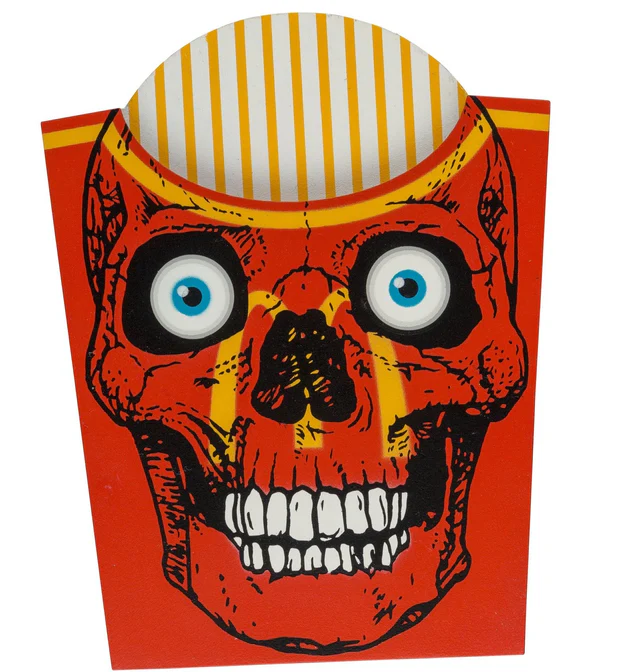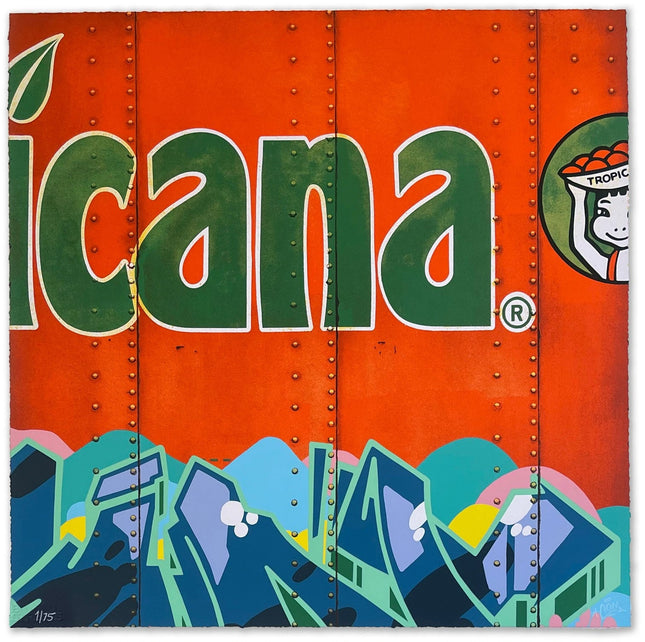
Food & Eating

Tim Conlon Tropic-Ana Silkscreen Print by Tim Conlon
Tropic-Ana 16-Color Hand-Pulled Limited Edition Silkscreen Print on 330gsm Orange Plike Paper by Tim Conlon Rare Street Art Famous Pop Artwork Artist. 2022 Signed & Numbered Limited Edition of 75 Artwork Size 24x24 Orange Tropicana Logo Close-Up of Rail Car, Truck or Shipping Container. Tim Conlon, celebrated for his profound impact on the street and pop art realms, brings forth "Tropic-Ana," an exquisite 16-color hand-pulled silkscreen print. The artwork, impressively produced on 330gsm Orange Plike paper, radiates with vibrant colors and intricate detailing that Conlon is renowned for. Measuring 24 x 24 inches, it's a creation that's impossible to overlook. With a limited edition release of only 75 pieces, each deckled-edge print is directly signed by the artist himself, adding an intimate touch of authenticity for collectors and enthusiasts alike. At the heart of this piece is its connection to Conlon's much-acclaimed "Blank Canvas" series. Specifically, it draws inspiration from his original painting, "Blank Canvas #115 - TPIX." This series is emblematic of Conlon's expertise in weaving together elements of spray paint, intricate typography, abstract painting techniques, and tromp l'oeil. Through "Tropic-Ana," Conlon offers viewers a close-up, almost magnified, perspective of the freight train painting culture, a niche yet deeply expressive sub-domain of street art. Conlon's innovative approach to meshing traditional painterly styles with the raw energy of graffiti art makes "Tropic-Ana" not just a print but a storytelling canvas. This collaboration with BEYOND THE STREETS further cements the artwork's significance, with the print edition bearing the organization's distinct embossing, signaling its approval and association with one of the modern art world's most influential entities. "Tropic-Ana" stands not just as a testament to Conlon's artistic prowess but also as a celebration of the street and pop art movement's evolution and dynamism. Signed Tim Conlon Tropic-Ana, 2022 16-Color Screen Print on Orange Plike 330 gsm Deckled Edge 24 x 24 in( 61 x 61 cm) Edition of 75 Direct Signature by the artist Embossed by BEYOND THE STREETS Based on his original painting Blank Canvas #115 - TPIX, from his prolific and ever-expanding Blank Canvas series, BEYOND THE STREETS is thrilled to present a rare print edition from iconic painter and graffiti writer Tim Conlon. Combining spray paint, typography, painterly abstraction, and tromp l'oeil to create these large-scale, close-up paintings, Conlon presents a literal "peek" into freight train painting art and culture.
$480.00


